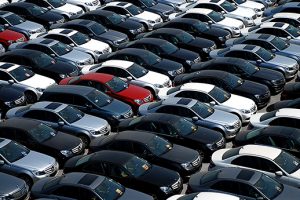 Vehicle logistics has long been accused of lagging other parts of the supply chain – notably inbound or in-plant logistics – in technology, precision and processes. OEMs and providers complain about the same problems, year in, year out, from poor visibility to a lack of common standards.
Vehicle logistics has long been accused of lagging other parts of the supply chain – notably inbound or in-plant logistics – in technology, precision and processes. OEMs and providers complain about the same problems, year in, year out, from poor visibility to a lack of common standards.
That it is really so behind was always an oversimplification, though the reasons for thinking so were obvious. A captive market of specialised, often dedicated equipment has created a smaller market and smaller players (though with many family-owned, that is hardly a bad thing). Low margins, meanwhile, leave little room for investment in new technology – although the sector is highly flexible and price competitive.
It may be time to stop repeating the platitude, however. A shining example is BMW, where since taking over outbound after a career in material logistics, Anita Pieper has overseen an expanded use of connected car technology and brought in tools and competencies from across the supply chain.
There are many exciting developments elsewhere, from a growing use of LNG fuel for shipping and trucking, to use of the China-Europe railway for vehicles. Even smaller carmakers, like Suzuki in Europe, are improving vehicle visibility. Logistics experts are also looking excitedly at the potential for technology like blockchain.
OEMs also better appreciate that they cannot reap technology benefits without common standards. A working group, under the auspices of the Association of European Vehicle Logistics (ECG), brings together 12 carmakers plus IT specialists to build a common framework.
There are also regulatory improvements. ECG reports that the sector is better able to speak with one voice to European governments, with hopeful progress in areas such as digital documentation. A busy series of elections, as well as the start of Brexit negotiations, are holdups to such lobbying efforts, as well as opportunities for change.
Meanwhile, China and India are enforcing new trucking regulations that should help end decades of non-standard equipment and loading. There are growing pains, as India shows, but most in the sector see long-term benefits.
Some of these projects reflect stronger economies. Even Brazil has returned to growth. However, uncertainty lurks. The US market is in decline, and vehicle ports started seeing drops in volume last year.
To make real progress, and dispense with its laggard reputation once and for all, the vehicle logistics sector must prove it can work together in good times and in bad.

























![Global[1]](https://d3n5uof8vony13.cloudfront.net/Pictures/web/a/d/s/global1_726550.svgz)









